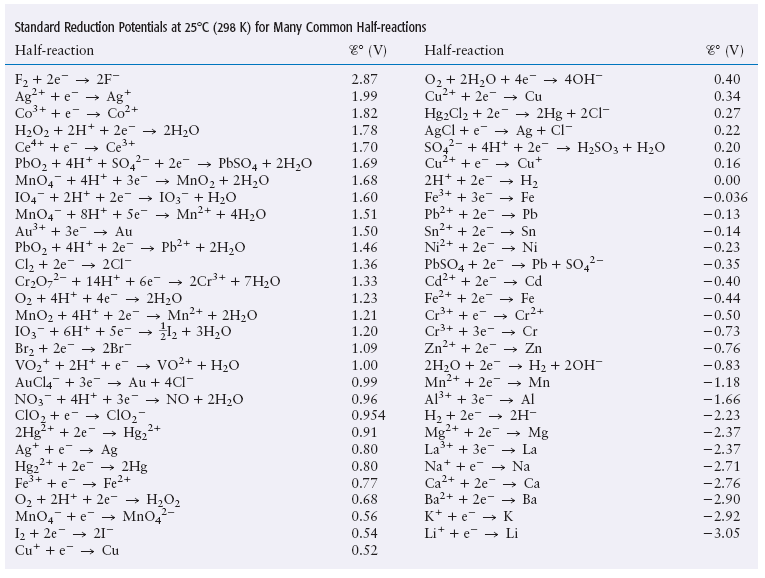Which of the following species is the strongest reducing agent?
A. Cl2
B. Cu
C. Mg2+
D. Zn
D) Zn
Reducing agents get oxidized, so we need to reverse the reactions in table 4.1. This eliminates choices A & C, because Cl2 and Mg2+ cannot oxidize further. Between Zn and Cu, the more favorable oxidation (reverse reaction from table 4.1) is found with zinc (0.76 > -0.34)

My question:
So Cl2 can't be oxidized because it's stable as a diatomic molecule?
And I'm assuming Mg2+ because it has reached noble gas configuration (this one makes sense to me), but if you didn't realize those, and just based it off the table above, then you'd make the mistake of picking Mg2+ as the answer.
A. Cl2
B. Cu
C. Mg2+
D. Zn
D) Zn
Reducing agents get oxidized, so we need to reverse the reactions in table 4.1. This eliminates choices A & C, because Cl2 and Mg2+ cannot oxidize further. Between Zn and Cu, the more favorable oxidation (reverse reaction from table 4.1) is found with zinc (0.76 > -0.34)

My question:
So Cl2 can't be oxidized because it's stable as a diatomic molecule?
And I'm assuming Mg2+ because it has reached noble gas configuration (this one makes sense to me), but if you didn't realize those, and just based it off the table above, then you'd make the mistake of picking Mg2+ as the answer.

